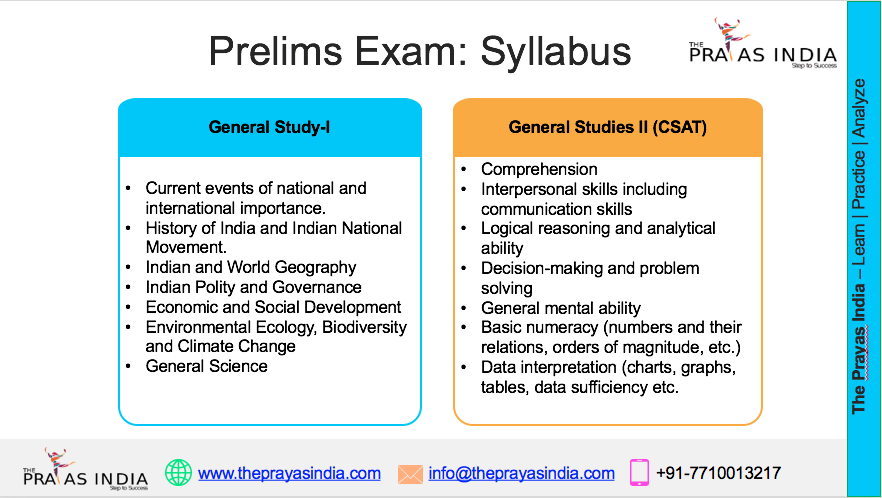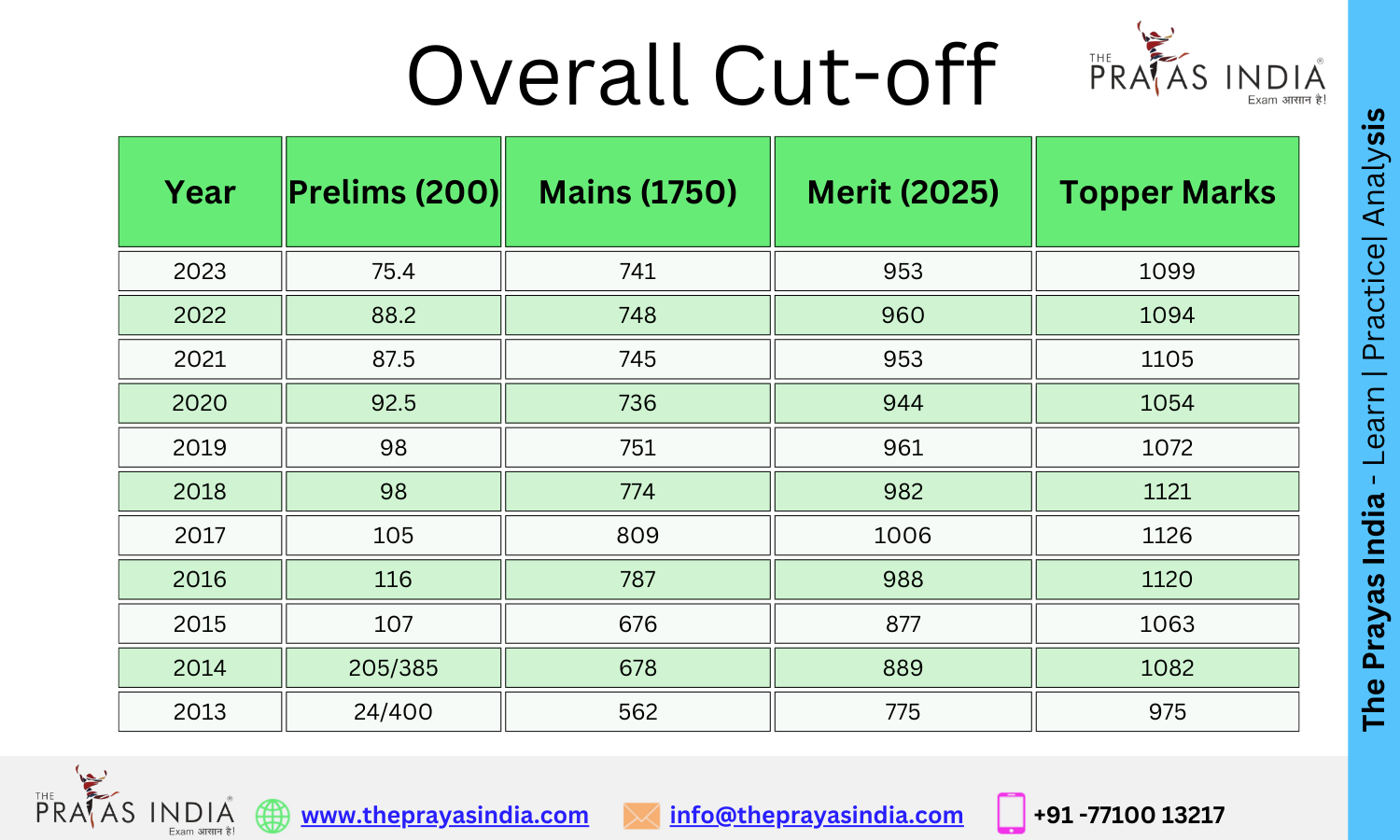UPSC CSAT Analysis 2024-2022: Important Topics, Difficulty Level
Understanding the UPSC CSAT paper is essential for assessing its difficulty level and the weightage of various topics. Ignoring a proper analysis of this exam can result in:
- Misjudging the actual difficulty level of the paper.
- Failing to focus on high-scoring topics.
- Wasting valuable time on less relevant topics.
Analyzing the CSAT paper allows aspirants to strategize their preparation effectively, increasing their chances of success.
UPSC CSAT 2024 Analysis
Below is a detailed breakdown of the UPSC CSAT 2024 exam, covering question distribution and subject-wise difficulty levels.
UPSC CSAT 2024 Question Distribution
| Subject | Number of Questions |
|---|---|
| Maths | 38 |
| Comprehension and Decision Making | 27 |
| Reasoning | 15 |
| Total | 80 |
Key Observations:
- The overall difficulty level ranged from moderate to difficult, though it was slightly easier than the 2023 paper.
- Conceptual understanding was crucial to answering most questions correctly.
- The number of lengthy statement-based questions decreased compared to the previous year.
Takeaways for Aspirants:
- Focus on strengthening conceptual knowledge.
- Regularly attempt mock tests and analyze mistakes to identify weak areas.
- Practice answering under timed conditions to improve speed and accuracy.
- Learn to identify time-consuming questions and allocate time wisely.
UPSC CSAT 2024 Maths Analysis
Question Distribution
| Topic | Number of Questions |
| Percentage | 5 |
| Ratio and Proportion | 3 |
| Profit and Loss | 2 |
| Compound Interest | 0 |
| Data Interpretation | 0 |
| Ages & Partnership | 1 |
| Time & Work | 2 |
| Number System | 19 |
| Number Series | 3 |
| HCF & LCM | 2 |
| Others | 1 |
| Total | 38 |
Difficulty Level
| Difficulty Level | Number of Questions |
| Easy | 7 |
| Moderate | 18 |
| Difficult | 13 |
| Total | 38 |
Key Observations:
- Maths contributed to nearly 50% of the paper.
- Fewer questions appeared in 2024 compared to 2023.
- No questions were asked from permutation & combination, probability, or mensuration.
- The number system dominated the section with 19 questions.
Takeaways for Aspirants:
- Identify and attempt easy and moderate questions first to maximize scoring.
- Strengthen conceptual understanding rather than just memorizing formulas.
- Solve diverse problems to improve accuracy and efficiency.
- Regularly practice under timed conditions to manage time effectively.
UPSC CSAT 2024 Comprehension and Decision-Making Analysis
Question Distribution
| Passage Level | Number of Questions |
| Level 1 (1 question) | 9 |
| Level 2 (2 questions) | 18 |
| Level 3 (3 questions) | 0 |
| Level 4 (4 questions) | 0 |
| Total | 27 |
Difficulty Level
| Difficulty Level | Number of Questions |
| Easy | 4 |
| Moderate | 11 |
| Difficult | 12 |
| Total | 27 |
Key Observations:
- The number of Comprehension and Decision Making questions remained consistent with the 2023 paper.
- Level 1 passages were reduced, while Level 2 passages increased.
- Reading comprehension questions were more abstract and challenging than in previous years.
- No questions were asked from Level 3 or Level 4 passages.
Takeaways for Aspirants:
- Practice time-bound mock tests to improve reading comprehension speed.
- Attempt Level 1 passages first, as they are easier and have high accuracy potential.
- Work on extracting main ideas and key arguments quickly.
UPSC CSAT 2024 Reasoning Analysis
Question Distribution
| Topic | Number of Questions |
| Alphanumeric Series | 1 |
| Coding & Decoding | 2 |
| Direction Sense | 2 |
| Ranking & Order | 3 |
| Syllogism | 2 |
| Clock | 2 |
| Calendar | 2 |
| Cube & Cuboid | 1 |
| Total | 15 |
Difficulty Level
| Difficulty Level | Number of Questions |
| Easy | 4 |
| Moderate | 8 |
| Difficult | 3 |
| Total | 15 |
Key Observations:
- The number of reasoning questions has gradually declined over the years.
- There was a slight increase in reasoning questions compared to 2023.
- No questions were asked from blood relation, analytical reasoning, or letter series.
- Some coding-decoding, clock, and calendar questions were relatively easy.
Takeaways for Aspirants:
- Strengthen basic reasoning concepts, especially for clocks and calendars.
- Solve previous years’ papers and mock tests.
- Develop a logical approach to solving reasoning problems.
- Manage time efficiently by identifying and solving easier questions first.
UPSC CSAT 2023 Analysis
UPSC CSAT 2023 Question Distribution
| Subject | Number of Questions |
| Maths | 43 |
| Comprehension and Decision Making | 26 |
| Reasoning | 11 |
| Total | 80 |
Key Observations:
- The overall difficulty level of the 2023 exam was difficult.
- A higher number of lengthy, statement-based questions were asked.
- Conceptual clarity was essential for answering questions correctly.
Takeaways for Aspirants:
- Prioritize conceptual understanding and problem-solving.
- Regularly practice mock tests and analyze mistakes.
- Manage time efficiently and identify time-consuming questions.
UPSC CSAT 2023 Maths Analysis
Question Distribution
| Topic | Number of Questions |
|---|---|
| Percentage | 1 |
| Ratio and Proportion | 0 |
| Profit and Loss | 0 |
| Compound Interest | 1 |
| Data Interpretation | 0 |
| Ages & Partnership | 1 |
| Time & Work | 1 |
| Number System | 22 |
| Number Series | 2 |
| HCF & LCM | 1 |
| Permutation & Combination | 11 |
| Mensuration (2D, 3D) | 2 |
| Total | 43 |
Difficulty Level
| Difficulty Level | Number of Questions |
|---|---|
| Easy | 8 |
| Moderate | 21 |
| Difficult | 14 |
| Total | 43 |
Key Observations:
- Maths had the highest weightage in the 2023 CSAT exam.
- Questions from the number system and permutation & combination were more frequent than in 2022.
- No questions appeared from ratio and proportion, profit and loss, time-speed-distance, and data interpretation, which were included in 2022.
- A strong conceptual understanding was required to solve most questions.
Takeaways for Aspirants:
- Focus on mastering the number system, as it remains a high-weightage topic.
- Learn problem-solving strategies for permutation & combination, which had a significant presence.
- Prioritize time management, as many questions were concept-heavy.
- Regularly practice mock tests under exam-like conditions.
UPSC CSAT 2023 Comprehension and Decision Making Analysis
Question Distribution
| Passage Level | Number of Questions |
|---|---|
| Level 1 (1 question) | 22 |
| Level 2 (2 questions) | 4 |
| Level 3 (3 questions) | 0 |
| Level 4 (4 questions) | 0 |
| Total | 26 |
Difficulty Level
| Difficulty Level | Number of Questions |
|---|---|
| Easy | 10 |
| Moderate | 8 |
| Difficult | 8 |
| Total | 26 |
Key Observations:
- A majority of questions were from Level 1 passages, making them relatively easier to attempt.
- The number of Level 2 passages decreased compared to 2022.
- No questions were asked from Level 3 and Level 4 passages.
- The passages were based on traditional UPSC topics rather than abstract themes.
Takeaways for Aspirants:
- Prioritize Level 1 passages to maximize accuracy.
- Develop a habit of quick reading and comprehension to save time.
- Solve previous year papers to understand the pattern of reading comprehension.
- Practice summarizing passages in your own words to enhance comprehension skills.
UPSC CSAT 2023 Reasoning Analysis
Question Distribution
| Topic | Number of Questions |
|---|---|
| Alphanumeric Series | 2 |
| Coding & Decoding | 1 |
| Letter Series | 1 |
| Blood Relation | 1 |
| Ranking & Order | 2 |
| Syllogism | 0 |
| Calendar | 1 |
| Cube & Cuboid | 1 |
| Analytical Reasoning | 2 |
| Total | 11 |
Difficulty Level
| Difficulty Level | Number of Questions |
|---|---|
| Easy | 4 |
| Moderate | 3 |
| Difficult | 4 |
| Total | 11 |
Key Observations:
- The reasoning section saw a significant decrease in weightage compared to previous years.
- No questions were asked from direction sense, syllogism, sitting arrangement, puzzles, or clocks.
- Analytical reasoning and ranking & order questions required more logical thinking.
Takeaways for Aspirants:
- Strengthen fundamental reasoning skills, as basic concepts can help solve a variety of questions.
- Practice different types of logical reasoning questions from previous years.
- Focus on accuracy while solving analytical reasoning questions.
- Develop a strategy to identify easy and moderate-level questions first.
UPSC CSAT 2022 Analysis
UPSC CSAT 2022 Question Distribution
| Subject | Number of Questions |
| Maths | 38 |
| Comprehension and Decision Making | 27 |
| Reasoning | 15 |
| Total | 80 |
Key Observations:
- The difficulty level of the UPSC CSAT 2022 exam ranged from moderate to difficult.
- Concept-based questions required a deep understanding to answer correctly.
- A significant number of lengthy, statement-based questions were asked.
Takeaways for Aspirants:
- Strengthen conceptual knowledge and practice topic-specific questions.
- Attempt timed mock tests to improve speed and accuracy.
- Focus on time management by identifying time-consuming questions.
UPSC CSAT 2022 Maths Analysis
Question Distribution
| Topic | Number of Questions |
| Percentage | 4 |
| Ratio and Proportion | 1 |
| Profit and Loss | 1 |
| Ages & Partnership | 1 |
| Time & Work | 1 |
| Time, Speed, and Distance | 2 |
| Permutation & Combination | 7 |
| Number System | 15 |
| Number Series | 2 |
| Mensuration (2D, 3D) | 1 |
| Total | 38 |
Difficulty Level
| Difficulty Level | Number of Questions |
| Easy | 13 |
| Moderate | 16 |
| Difficult | 9 |
| Total | 38 |
Key Observations:
- Maths comprised around 50% of the paper.
- The number of questions increased compared to 2021.
- Permutation & Combination and Number System had higher weightage.
- No questions appeared from Pipes & Cistern.
Takeaways for Aspirants:
- Identify and focus on easy and moderate questions first.
- Prioritize conceptual clarity over memorization.
- Regularly practice diverse quantitative problems.
- Improve time management through timed practice sessions.
UPSC CSAT 2022 Comprehension and Decision Making Analysis
Question Distribution
| Passage Level | Number of Questions |
| Level 1 (1 question) | 6 |
| Level 2 (2 questions) | 12 |
| Level 3 (3 questions) | 9 |
| Level 4 (4 questions) | 0 |
| Total | 27 |
Difficulty Level
| Difficulty Level | Number of Questions |
| Easy | 7 |
| Moderate | 8 |
| Difficult | 12 |
| Total | 27 |
Key Observations:
- The total number of questions remained consistent with 2021.
- A significant increase in Level 3 passages compared to previous years.
- No questions were asked from Level 4 passages.
Takeaways for Aspirants:
- Focus on Level 1 and Level 2 passages for higher accuracy.
- Develop quick comprehension skills through practice.
- Attempt time-bound reading comprehension exercises.
UPSC CSAT 2022 Reasoning Analysis
Question Distribution
| Topic | Number of Questions |
| Alphanumeric Series | 2 |
| Blood Relation | 2 |
| Direction Sense | 1 |
| Ranking & Order | 1 |
| Syllogism | 2 |
| Sitting Arrangement + Puzzle | 3 |
| Clock | 3 |
| Calendar | 1 |
| Total | 15 |
Difficulty Level
| Difficulty Level | Number of Questions |
| Easy | 5 |
| Moderate | 8 |
| Difficult | 2 |
| Total | 15 |
Key Observations:
- The number of reasoning questions decreased compared to previous years.
- More focus on sitting arrangement, puzzles, and clock-related questions.
- No questions were asked from coding-decoding and analogy.
Takeaways for Aspirants:
- Strengthen core reasoning skills through diverse practice.
- Solve previous years’ questions for pattern recognition.
- Focus on time efficiency in solving logical problems.
The UPSC CSAT exam analysis serves as a crucial guide for aspirants navigating these exams. By understanding topic weightage, difficulty levels, and essential areas to focus on, candidates can refine their preparation strategy for the UPSC CSAT 2025 exam. Regular practice, time management, and conceptual clarity remain the key to success.



![Prayas-लक्ष्य [UPSC CSE Target] The Prayas India](https://theprayasindia.com/wp-content/uploads/2021/08/Prayas-लक्ष्य-UPSC-CSE-Target-The-Prayas-India-300x167.png)

![Prayas Pre-भेदश [UPSC CSE Prelims Test Series] The Prayas India](https://theprayasindia.com/wp-content/uploads/2021/08/Prayas-Pre-भेदश-UPSC-CSE-Prelims-Test-Series-The-Prayas-India-300x167.png)










